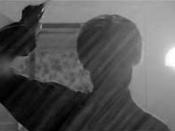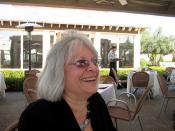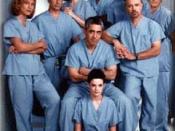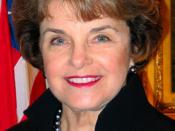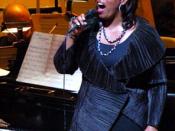Chicago Hope Essay Chicago Hope is a TV Drama. The show uses camera shots and angles', lighting, dialogue and characters to portray the attitudes and values of the director. These are also used to push across themes. The values and attitudes that are strongly pushed across in this episode are Relationships, Law and order, gender and race and Men's health.
A major relationship that is focused upon in this episode is the one between Dianne and Margaret, who is supposedly Dianne's lost mother. The fact that Margaret gave Dianne up for adoption at birth means that this reunion will be a very delicate one. The close up of Dianne in the car before she gets out the car to met her mother shows her feelings and makes it known that this is an important moment for both mother and daughter. The extreme close up when Dianne says "I'm the daughter" shows us the full impact of the statement and it makes us feel for Dianne and what she is going through at that moment.
When Dianne is in the bathroom and she opens the cabinet it frames her face, when she closes it and there are two figures in it. We are filled with shock, and the suspense of what will happen to her next keeps us involved and interested in the show - the music that is playing in this scene also adds to the dramatic tension. The next part of this story line sees Margaret talking about how she knows abit about medicine because she had a hysterectomy. By mixing up the dates we start to feel that something isn't quite right. While Margaret is talking about the hysterectomy and how there we complications we are being lead toward the attitude that doctors aren't always right nor are they Gods.
In the shower scene there are sound effects of creaking taps, water-running and so on, this gives us the impression of a creepy old house. The close up of Dianne with the silhouette in the background gives us the feeling that something bad is about to happen and that she is going to be the poor unsuspecting victim. This scene is exactly the same as the shower scene in Alfred Hitchcocks' "Psycho".
When Dianne has found out that Margaret is really Alfreda Perkins, Billy wants to leave but before they can Margaret comes out with a knife. This immediately makes us think that she is going to turn out like the psycho lady we think she is. It turns out to not be like we thought but the way in which she waved the knife around reflected light, which was something that was very important in the days of black and white TV as it showed different types of light.
When we see the scene with Dianne and Billy getting out the car we have no idea where they are. A low angle shot is used to look up at Dianne then we look straight at a grave. This is done to make us pay attention as something important is coming up that the director wants you to take notice of. Dianne says " It was never about what she was like, it was about her finding out what i'm like" there is a close up of her face to show that she is sad that her mother never knew what she was like and therefore could never be proud of her.
Jack and Shawn McNeil portray another important relationship in the show. Jack and Shawn are brothers. Shawn has been away in prison for a long time for murdering somebody when he was 16. In a scene involving the brothers a security window frames them, and they are both on either side of it. This gives us the feeling that they are locked out of each other's lives.
Later on in the story Shawn tells Dr. Cateria that to Jack "being a doctor is not about helping, it's about hiding." This is due to the fact that Shawn's father used to bash him and Jack would stay up in his room studying to hide. Jack proves that this is true when later having a conversation with Dr. Cateria he says " I didn't know what to do, so I went back upstairs and finished the chapter, he was my little brother⦠I should have protected him." Earlier on in the story when given a medical excuse for why Shawn killed someone, Jack doesn't want to believe it. He asks Dr. Cateria " Who should they have locked up then? My father?" This strongly goes towards the theme of law and order. The fact is that if his dad didn't bash him, then Shawn wouldn't have killed anyone. We are now faced with the question of who was really to blame for the murder? The story line that follows Dr. Phillip Watters contains many themes. When Phillip first gets his telescope there is a close up of his face, followed by a point of view shot as the telescope pans the city. When he sees the murder there is an extreme close up to show his fear and to make us believe that he saw something truly horrific. The music in this scene also lets us know that something bad had happened. When Phillip is looking at the city the music is all light and airy, when he sees the murder the music jolts and bangs telling us there is something wrong.
In the elevator scene with Dr. Watters, Roger and Eden Candle there is a lot of tension, which we see through the body language of the characters. When Roger tells Phillip who's hand it was, there are extreme close ups of Phillips eyes then Eden Candles then Phillips again this gives us the whole "He knows, she knows he knows" thing without any dialogue.
When the police finally catch Eden Candle and Manson Van Dame there is a long shot of the police capturing them. This scene shows us that crime doesn't pay.
Another issue portrayed strongly by the character Phillip Watters is that of men's health. Dr. Watters says early in the show "If its not broke, don't fix it", this tells us that he wont have a check up of any sort unless there is something wrong with him. If we read more into his we see that he is just too scared that something may be wrong and he doesn't want to have to deal with it so he wont have a check up.
As Doctor Wilks keeps telling Phillip to get 'scoped' we see them both in a medium shot, when Phillip answers we get a close up of his face so we can see his resistance to the idea. At the end of the show when Phillip has agreed to be scoped we see Dr. Wilks eye looking through a telescope of some kind and we here Phillip asking if everything is all right. We don't know but we have a suspicion of what he is looking at, it turns out that it was not what we thought and that this was the director adding humor to a subject that is very tense to men.
In the morgue scene with Dr. Watters and Roger we find out what happened to Harry. There is a medium level tilt shot, which shows that the doctors are superior to Harry because they are not dead. Harry's wife thought she killed Harry but this is not the case because Roger says " Blueberry muffins didn't kill Harry, Harry killed Harry with alcohol. This is the show again looking at the issue of men's health.
The music in Chicago Hope adds tension and suspense to the scenes. As the show cuts from scene to scene the story is not dropped. Nearly every scene cuts away on a climax. When it cuts it takes something similar from the last scene to start the next scene with. An example of this is Kate Austin's cocky squawking it then cuts to Phillip looking out of his telescope at a crow squawking. In this way we are never taken away from the story just that one particular story line.
A director uses lighting, dialogue, characters, camera shots and angles to portray important values, attitudes and themes to their audience. In this episode of Chicago Hope the director has successfully portrayed the issues of relationships, law and order, gender and men's health all by using all of the various techniques.
